When you think of old cans, what comes to mind? Maybe it’s the old can of apple juice your ancestors had.
Chances are, you don’t think of milk cans, but there’s a 100% chance that someone else does. Have you ever seen one yourself? If you have, this article is for you! We’ll tell you all about the different types of old milk cans and give tips on how to date them.
Old milk cans are a surprising source of historical information and a great way to collect a few extra dollars at an auction or flea market.
The purpose of this article is to illustrate the more common milk containers that you may encounter at your local flea market, antique shop, or anywhere else where you find interesting old items, as well as to provide a rough price range that you might expect to pay if you decide to purchase one of these containers.
For better insight, keep reading!
Table of Contents
An Overview of the Past in These Old Milk Cans
Milk cans are a symbol of the past. The history of old milk cans is more interesting than you think.
Milk cans have been used for centuries. In fact, they were first made of wood and then metal. They began to be used in the late 1800s with the invention of pasteurized milk.
Before this time, people drank raw milk, which was very common for them to get sick. The pasteurization process changed all that.
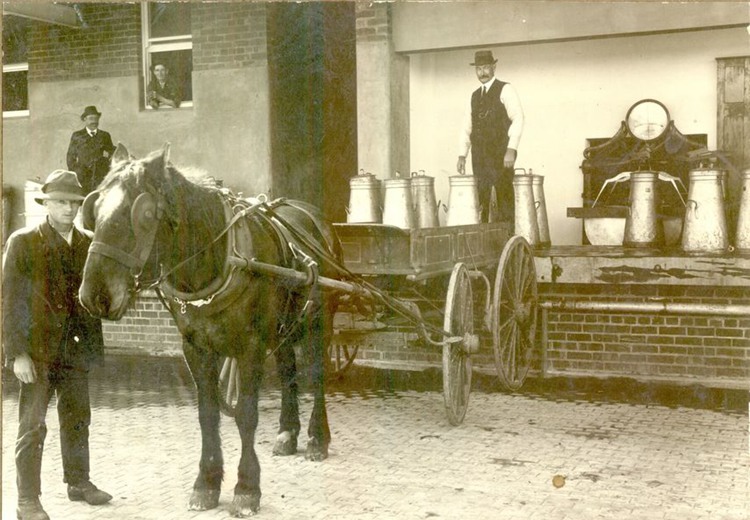
Evolution in Design
The design of these cans was simple: a metal container with a spout and handle on top, used to collect and transport fresh milk from farms to urban areas.
In those days, fresh milk was an essential part of a healthy diet for children and adults—a far cry from today’s “milk” products!
The design of the milk changed over time as technology improved and new materials became available.
For example, in the early 1900s, many people used glass bottles to transport their milk; this meant they had to be transported by train or ship to reach urban markets. This posed a problem because glass bottles were heavy and prone to breakage during transport.
To solve this problem, manufacturers began experimenting with steel containers instead of glass ones so they could be more easily transported via rail or sea.
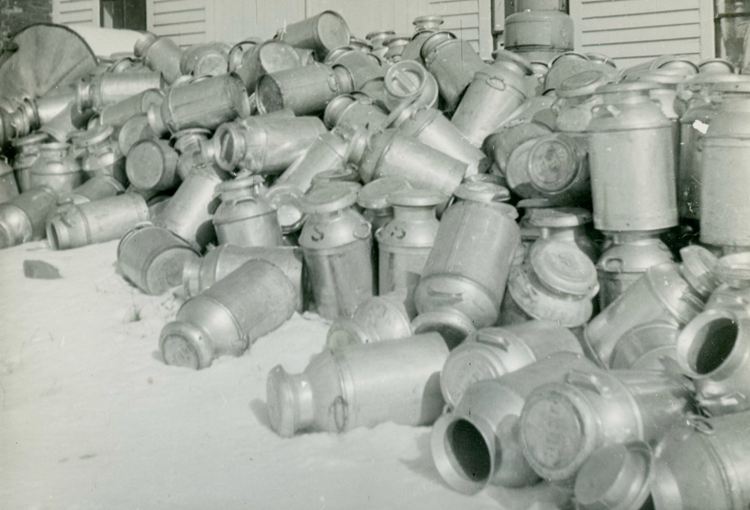
However, they soon discovered that these steel containers were too heavy and bulky to be practical for everyday use; this led them to develop lighter aluminum versions instead.
These lighter aluminum versions were easier to carry than steel ones but still fragile enough that they needed some protection.
Eventually, milk cans took on many designs and sizes depending on who manufactured them and what type of milk they contained (cow or goat). Some even came with covers attached so that you could store other things inside of them once all of your milk was gone!
Milk delivery was a common practice in the early 20th century. Most people got their milk delivered right to their door. But this changed after World War II because of the invention of convenience stores and supermarkets.
By the 1920s, larger cities had many companies manufacturing milk cans on farms and urban areas where people needed them for their daily lives.
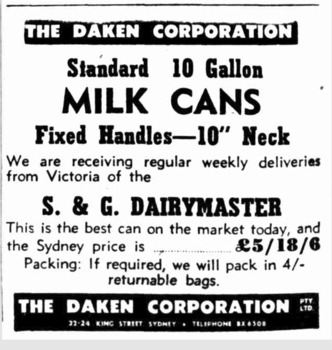
Why Are Milk Cans So Collectible?
These vintage milk cans are a great example of collectible items’ charm. You can use unique pieces to decorate your home or office.
They also make great gifts for friends and family members who love history and collectibles.
But why are they so collectible?
- First, they’re big and have a large surface area, which makes them easy to paint or decorate. They also have a lot of detail and interesting lines, so they’re easy to photograph — especially with a macro lens.
- Second, they bring back memories for many people because they were all over the place when most people were kids. This is especially true if you grew up in a rural area where you didn’t have refrigeration access until recently.
- Third, they’re often found at garage sales and flea markets because they’ve been sitting around since before most people were born. That means plenty of them are out there waiting for collectors like you!
Types of Vintage Milk Cans
There are many different milk cans, from the classic glass to the metal milk can. Some have a handle, and some do not.
Some have a fixture on the front, and some do not. Some can be used for holding anything from water to garbage, while others are specifically designed for milk delivery.
● Glass Bottles
The most common type of vintage milk can is made of glass and has a metal spout on the front. This style is known as a glass milk bottle or glass jug and was used for both home delivery and commercial use.
They were popular in the early 1900s but became less common after World War II when plastic jugs became more affordable.
In recent years, however, these old-fashioned bottles have become popular again among collectors who enjoy collecting antique items from their childhoods or grandparents.
● Wooden Milk Cans
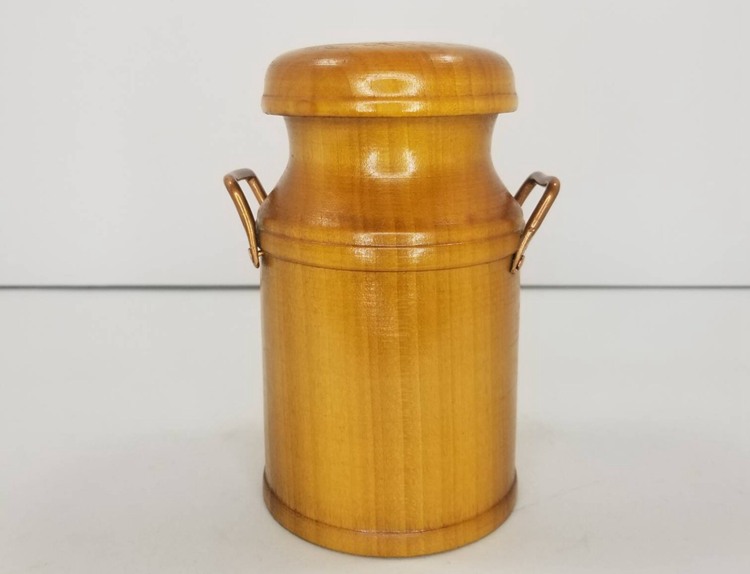
These vintage wooden milk cans are made from genuine reclaimed wood and are available in various colors. They come with a galvanized steel handle, making them easy to carry around.
The vintage wooden milk cans are perfect for any home garden or yard. They look great when filled with flowers or herbs and can be used as planters for your plants or vegetables.
You can also use them as storage containers for firewood, tools, or other items that need to be kept outside but require protection from the elements.
● Metal Milk Cans
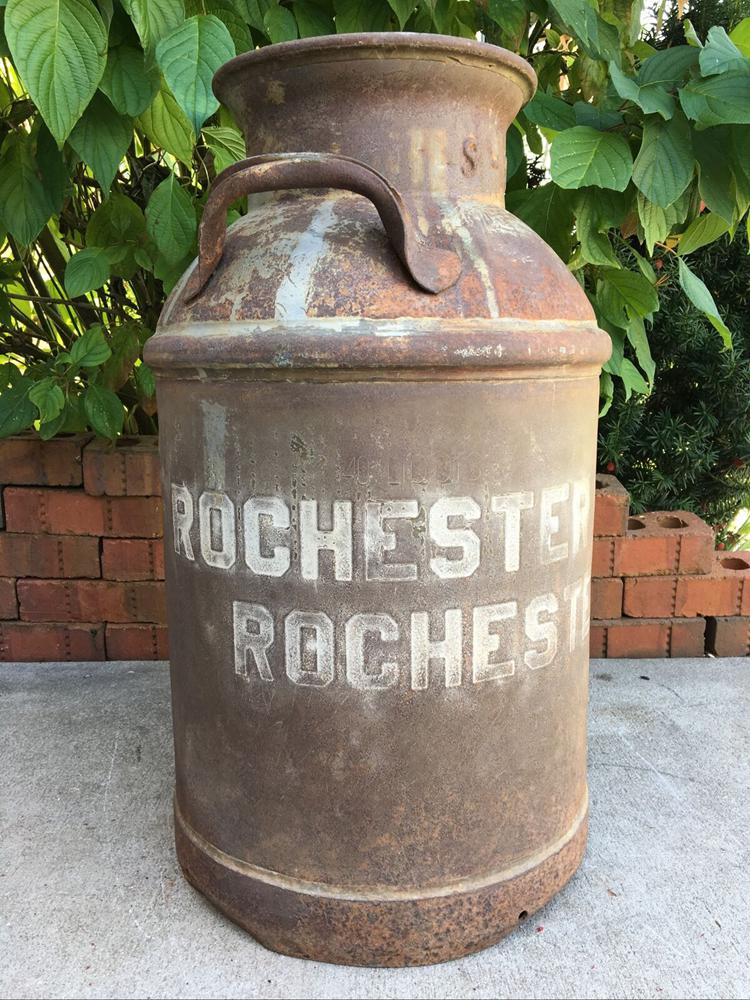
Another vintage milk can is made entirely of metal with no glass. Metal milk cans have been used since the mid-1800s.
These are often called tin cans or jugs and were used by farmers who needed something that would hold liquid without breaking easily during transportation or delivery.
Metal milk cans come in many different colors and designs. Some metal milk cans have handles on top while others do not. For those without handles, it is easier for them to stack because there is no need for lids or covers that sit on top of them.
What You Need to Know About Dating Old Milk Cans
Milk cans are one of the most popular collectibles. They were used to store milk and other beverages in the early 1900s until plastic replaced them.
Dating vintage milk cans is not as difficult as you might think. The date of your old milk can will tell you how old it is, so here are some tips on determining the date of your old milk can.
● Size
The first way is by looking at the size of the can. Milk cans were made in various sizes over time, so if you know the size, this can help you determine when it was made.
To determine the size, measure the height and circumference of your can and compare those measurements to ones provided by collectors or online sources such as eBay.
● Marking
Another way is by looking for markings on the bottom of the can. While many vintage milk cans do not have markings on their bottoms, some do have them or may have had them removed from wear or rusting over time.
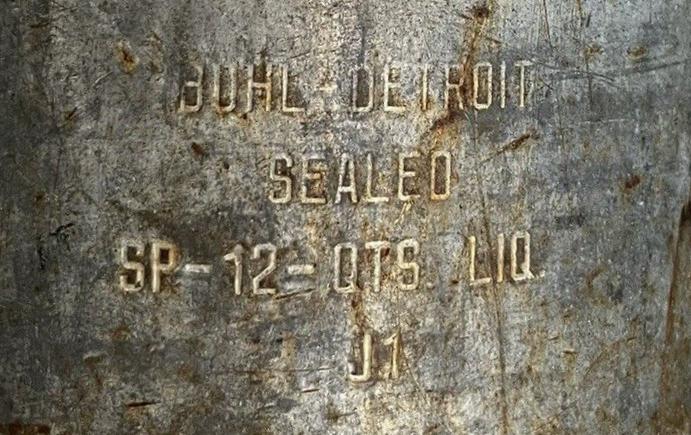
If your can has these markings, they will help determine its age and value and tell you if it has been restored since its original creation, which means its value may be lower than expected.
● The label
Next, look at the label on the can. Is it creamy white or yellowish? If it’s creamy white, it was made before 1950 when they changed the formula to make it whiter.
But if it’s yellowish, don’t worry — it was made after 1950, and there was no change in the formula.
● Farmer’s name
Another way to date these old milk cans is by looking at the former’s name. “Former” is a term used in the dairy industry that refers to the person who bottles the milk.
In other words, seeing “Former: John Doe” on your vintage milk can means that John Doe bottled this particular brand of milk for his customers.
If there is no name on your can, it was likely made after 1951. Before that year, farmers would not allow their names to be used on advertising materials because they wanted to remain anonymous.
● Examine the Material
Most metal cans are made from steel, so check for rust or corrosion outside the can. If there’s no rust or corrosion, then your can is probably made of aluminum (which cannot be rusted).
Steel cans often have a name or logo stamped, which can help you identify their age.
If you have a can not mark with an expiration date, you can use these methods to determine if the can is from before or after the 1950s. Tin cans were used from 1810 to 1925; aluminum was used from 1925 onward.
● Look at the Lid
Before refrigeration, milk was delivered to homes in glass bottles or tin cans. The cans were sealed with a wire bale with a hole in them, allowing air to escape so the milk didn’t spoil.
If the lid has holes in the cap, it was made before the 1920s. If not, then it was likely made after that period.
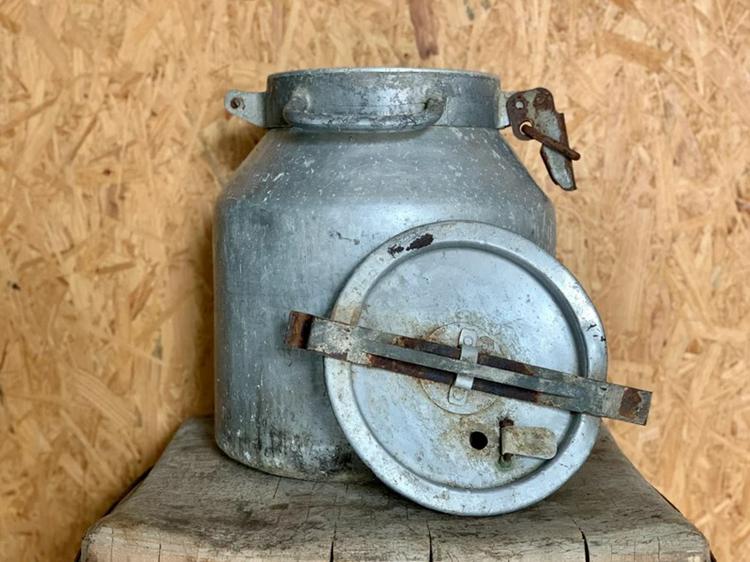
Identification of Vintage Milk Cans
You might be wondering if a can is vintage or not. You are not alone—there are a lot of people out there who have no idea what they’re looking for. But don’t worry! We’ve got you covered.
Vintage milk cans are a great addition to any collection. These can be used as decorative pieces or even functional items. The cans were made with sturdy metal that can be used repeatedly.
You must know how to identify vintage milk so that you do not get one that is not authentic or does not fit your needs correctly.
Here are some tips on how to identify vintage milk cans:
- Look for a curved lid on both sides and a top handle. Milk cans with this design were made from the late 1800s through the 1920s.
- Look for a flat lid on one side and a rounded one on the other (like a pie plate). These were made from the 1920s through the 1940s.
- Check if there’s any writing on the side of the can (it should be below the handle). If there’s no writing, then it’s definitely from before 1940 because, after that date, milk companies started using pasteurization methods that didn’t require them to put expiration dates on their cans anymore!
- Milk cans are usually made from tin plate steel, which rusts easily if it’s not well maintained. If you see rust on your can, it’s probably not old enough to be considered vintage.
How to Determine the Value Of Old Milk Cans
Old milk cans are a great collectible item. The cans transported milk from the dairy farm to your local grocery store. The can was durable and could hold a lot of milk. The value of old milk cans is determined by age, condition, and manufacturer.
Collectors and dealers of vintage milk cans are always looking for new examples. The best way to find them is to watch farm sales, antique stores, estate sales, and flea markets.
It’s possible to find cans in good condition for $20 or less but if you want something nice, be prepared to pay more. For example, a good-looking tin can with its original lid can sell for over $200.
If you’re interested in selling your antique milk can, here are some things you should know:
- Conditionis important — the better the condition, the higher the price.
- The olderand rarer the can, the more valuable it will be.
- Thecolor of the paint and how well it has survived over time are also important factors when determining value.
- Check for rust or damageon the outside of the can, which may also indicate rust inside. Rust will decrease the value of your can, so it’s best to avoid these if possible.
Where To Find Old Milk Cans?
These vintage milk cans are iconic. You can find them everywhere, but they aren’t cheap. You can find old milk cans on eBay and Craigslist, but you’ll have to look hard.
The best way to find a vintage milk can is to visit antique stores and flea markets in your area. Look for dealers who specialize in collectibles like antique toys or kitchenware. If you don’t see old milk cans on display, ask the dealer if he has any in stock.
If you’re looking for a specific model of the old milk can, check out eBay before visiting local antique shops because some dealers may not have it in stock at the moment but are willing to get one for you if you place an order.
In What Ways Can You Restore Vintage Milk Cans?
The milk can is a piece of Americana; if you have one in your collection, it’s worth restoring it to its former glory. Milk cans are typically made of metal, which can be damaged easily by rust. In addition, milk cans are often painted or lacquered to show wear after years of use.
- The first step in restoring a milk can is to clean off any dirt or dust with soap and water. If the milk has rust, you’ll need to sand it off using sandpaper. If the rust is particularly bad or deep-seated, you may want to use an electric sander or file instead of sandpaper.
- Once all the rust has been removed, wipe the entire surface down with steel wool or fine sandpaper until it’s smooth again. Make sure there aren’t any traces of rust left behind as this could cause further damage later on.
- The next step is to apply primer to the entire surface of the milk can with a paintbrush or roller. Once this has dried for about 15 minutes, you can apply two coats of paint using either a brush or roller, depending on how big your can is and how much space it takes up in your garage!
Bottom Line
Depending on the rarity of a certain can and whether it is in good condition, old milk cans can be worth hundreds of dollars or even thousands.
It takes advanced antique collectible knowledge to date accurately and prices these cans properly. A professional will know what to search for to locate rare and valuable cans.
This particular guide can help appraise the value of milk cans and determine how old they are, emphasizing pre-1940 metal milk cans, as they are most desirable to collectors.
FAQs
Are old milk cans worth anything?
Old milk cans are worth money if they are in good condition and have never been used to store milk. If the can is rusty, or if it has been used to store milk, its value will be lower.
Depending on their condition, old milk cans are generally worth between $25 and $200.
The value of old milk also depends on what kind of can it is. The most valuable cans are those made out of tin rather than plastic. They are also more valuable if they have a date stamped onto them.
What are the old milk cans called?
Various names for old used milk cans include milk pails, milk churns, and dairy cans. They were used to transport and store milk before modern refrigeration technology. Today, they’re often used as decorative accents in homes because of their unique shape and history.
How do you clean antique milk cans?
The best way to clean and restore an old milk can is to use a soft scrubber and warm, soapy water. Avoid using abrasives that scratch the surface; never use soap with bleach.
If you have a lot of rust on your can, try sanding it off with fine-grit sandpaper. After cleaning the surface, the best way to ensure your restoration job is finished is by applying a coat of wax or polyurethane.
What to do with a vintage milk can?
Milk cans are a great way to add vintage charm to your home.
If you’re looking for a new way to use your milk can, here are some ideas:
- Repurpose it as an outdoor planter.
- Use it as a decorative piece on your porch or patio.
- Use it for storage in your garage, shed, or basement.
- Take it camping and use it as a lantern when you don’t want to mess with lighting candles or fuel.
- Use it as an aquarium stand; milk cans make excellent stands for fish tanks.
- Use it as a unique vase for flowers or succulents.
- Add balls of moss and pinecones to create an outdoor centerpiece!
How much can old milk weigh?
If you have a gallon of milk that’s past its prime, you’re probably wondering how much that gallon weighs. The answer is about 8 pounds. Fresh milk weighs about 8 pounds per gallon (4 kilograms per liter). This weight includes the water that makes up about 87 percent of fresh cow’s milk.
When were milk cans used?
Milk cans were used from the late 19th century until the mid-20th century. Before that, milk was delivered in pails and on small carts.
The cans were made of wood or tin and transported milk from farms to factories. Farmers would often deliver their milk directly to their customers, but the cans made it easier for them to transport their products long distances.
What kind of metal are old milk cans made of?
Old milk cans are made of a variety of metals. Early cans were made of tin. The most common metal used to manufacture milk cans was galvanized steel.
Galvanized steel is a type of iron that has been coated with a layer of zinc. This makes the metal much more durable and resistant to rust.

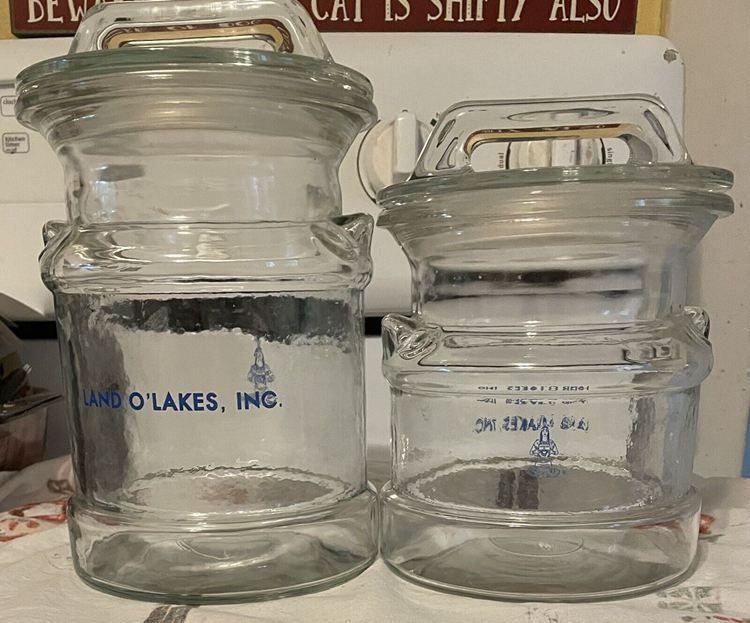




![Where To Sell Antique Furniture In 2022 [Ultimate Guide]](https://www.jacquelinestallone.com/wp-content/uploads/2022/09/Etsy-Your-Place-To-Buy-And-Sell-All-Things-Handmade-600x450.jpg)


